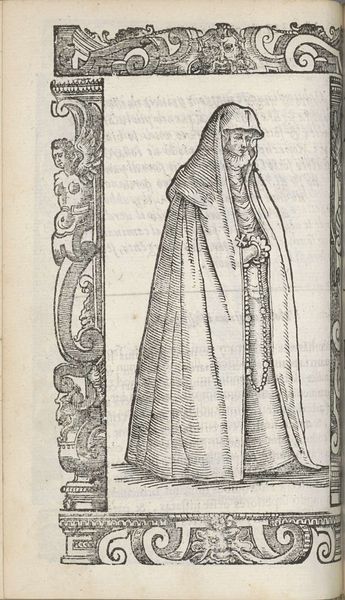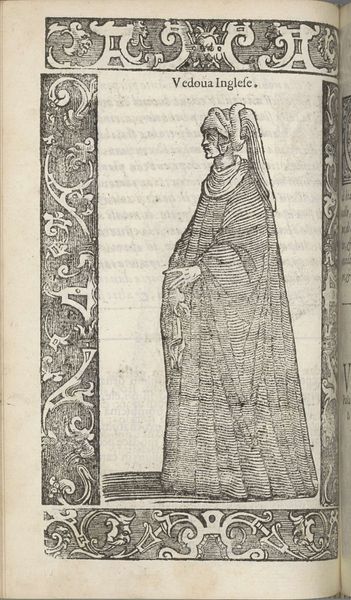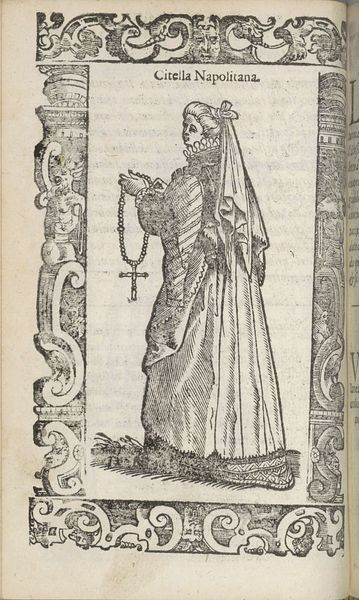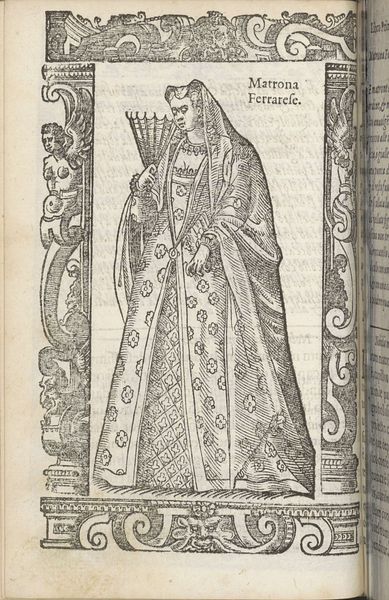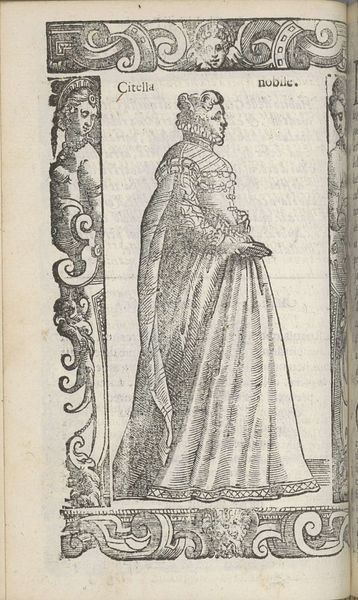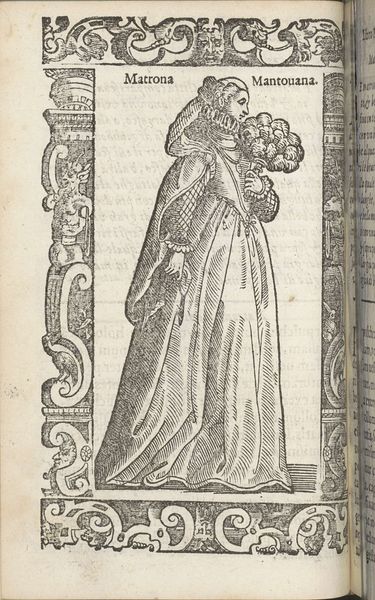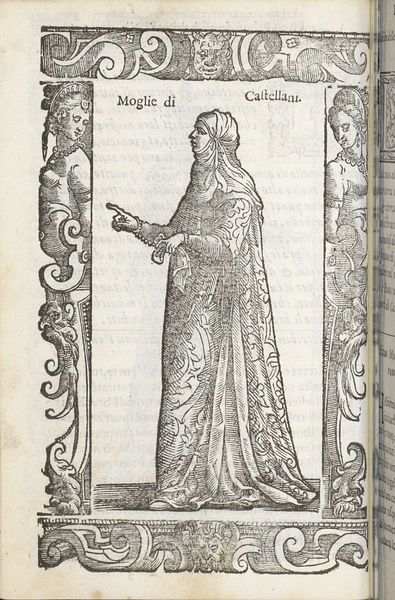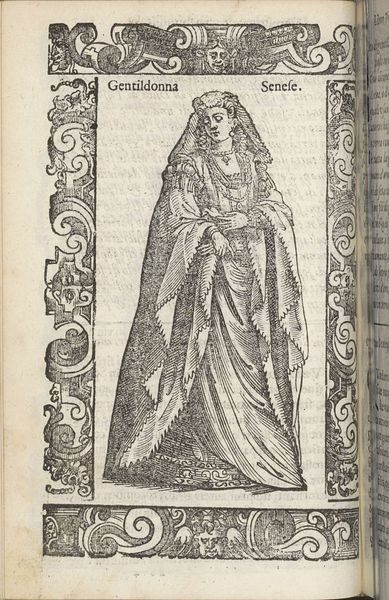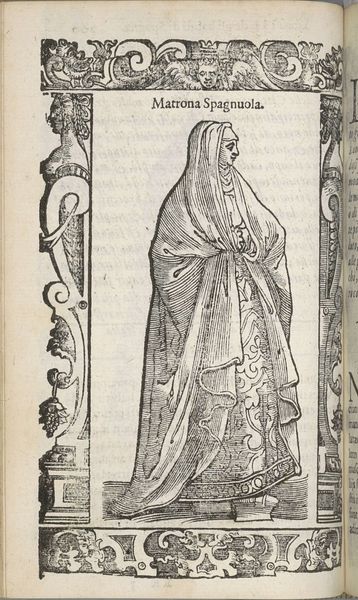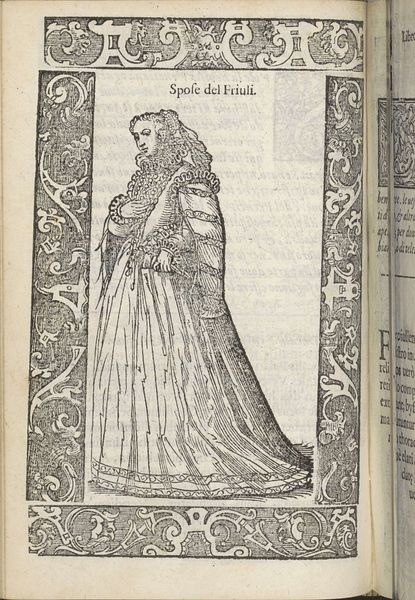
drawing, ink
#
portrait
#
drawing
#
pen sketch
#
figuration
#
11_renaissance
#
ink
#
northern-renaissance
Dimensions: height 167 mm, width 125 mm
Copyright: Rijks Museum: Open Domain
Editor: Here we have "Matrona di Galitia" by Christoph Krieger, made around 1598. It appears to be an ink drawing. There's a certain formality to the woman's pose and the elaborate frame around the portrait. What catches your eye in this piece? Curator: My focus immediately falls upon the interplay of lines. Krieger masterfully uses hatching and cross-hatching to define form and texture. Consider how the density of lines creates depth in the drapery folds versus the relatively sparse rendering of the face. This differential treatment guides the eye, no? Editor: Yes, it does. The folds of the gown definitely feel more substantial. What about the frame? Does it add to the overall structure? Curator: Precisely. The ornamental frame is integral, not merely decorative. Its symmetrical design and the use of grotesque figures create a visual tension, contrasting with the figure’s more subdued elegance. Note the textural contrasts there also; the smoothness of the angelic form juxtaposed with the rougher textures implying age and wear. How do these elements contribute to the overall semiotic value? Editor: I guess the frame is signifying something about status and perhaps even the passage of time? It feels almost like a stage for the subject. Curator: An astute observation. Indeed, the frame acts as a symbolic boundary and enhances our interpretation of the woman as a subject worthy of portrayal. This controlled composition, this arrangement of line and form, elevates her, don't you agree? Editor: Absolutely. Focusing on the visual language helps to pull so much meaning out of what seems like a simple drawing at first glance. Curator: Precisely, and it’s through this visual decoding that we begin to unravel the intended meaning.
Comments
No comments
Be the first to comment and join the conversation on the ultimate creative platform.
